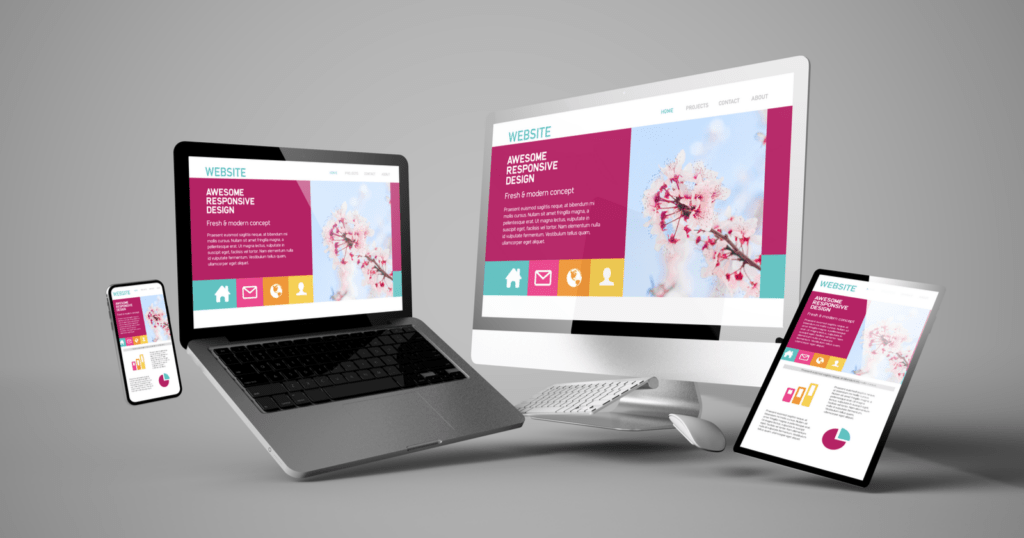Personalized Website Design Solutions for Business Websites
Personalized Website Design Solutions for Business Websites
Blog Article
Leading Tips for Producing an Impactful Website Design That Converts
In today's digital landscape, the importance of an impactful web site design can not be overstated, especially when it involves transforming site visitors into customers. To achieve this, one have to take into consideration a variety of variables, including recognizing the target market, focusing on user experience, and enhancing for mobile platforms. Moreover, the strategic use compelling call-to-actions and a well-defined aesthetic pecking order plays an important role in directing users through their trip. As we discover these important aspects, it comes to be noticeable that the success of your internet site depends upon even more than just visual appeal; it requires a thoughtful strategy to design and performance.

Understand Your Target Audience
Understanding your target market is essential to effective site layout, as it prepares for creating an appealing customer experience. Identifying who your users are, including their demographics, preferences, and actions, makes it possible for developers to customize the website's material, design, and functionality to satisfy certain requirements.
Conducting extensive market research is crucial in this process. Surveys, meetings, and analytics can provide valuable understandings into user expectations and discomfort points. By compiling this information, designers can produce user personas that stand for various sectors of the target market, making certain that style decisions are informed and appropriate.
Moreover, recognizing the target audience helps in selecting proper style components such as color design, typography, and imagery that resonate with users. A web site that talks straight to its target market promotes a feeling of connection and depend on, encouraging longer visits and greater conversion prices.
Eventually, a user-centered strategy to internet site layout not only boosts user satisfaction yet likewise sustains organization purposes by driving involvement and commitment. By focusing on the demands and choices of the target audience, a website can efficiently offer its objective and achieve preferred results.
Prioritize User Experience
To improve the total efficiency of a site, prioritizing individual experience (UX) is crucial (Website Design). A well-designed UX ensures that visitors can navigate the website effortlessly, discover details promptly, and engage with material meaningfully. This results in enhanced customer contentment and greater conversion rates
Begin by applying intuitive navigating. Menus needs to be rationally structured, allowing customers to find essential locations of the website with minimal effort. Consistency in layout components, such as color pattern and font styles, promotes experience, which is important for preserving customer engagement.
Additionally, consider the packing speed of your website. A hold-up of just a couple of secs can result in substantial drop-offs, as customers are much less likely to wait on a slow-loading web page. Simplifying images and enhancing code can boost efficiency and keep visitors.
Additionally, quality in content discussion is crucial. Usage concise, appealing language and separate text with visuals to boost readability. By prioritizing user experience, you not just produce an extra satisfying setting for visitors however additionally reinforce your brand name's reliability. Inevitably, a concentrate on UX is an investment in the lasting success of your web site.
Maximize for Mobile Devices
Maximizing for mobile tools is crucial in today's electronic landscape, where an enhancing variety of users gain access to websites via mobile phones and tablets. A mobile-friendly design not only boosts individual experience yet also plays a considerable function in enhancing internet search engine positions. To achieve this, it is vital to adopt a responsive layout that immediately adapts to different display sizes and orientations.

Packing speed is another vital variable; mobile users are commonly less person and anticipate fast accessibility to details. By prioritizing mobile optimization, you make certain that your site stays affordable and successfully engages a broader target market.
Use Compelling Call-to-Actions
A site's efficiency commonly depends upon its capability to lead visitors toward preferred actions, making compelling call-to-actions (CTAs) vital parts of design. CTAs offer as the crucial factors that direct customers to engage with the site, whether that implies making an acquisition, registering for an e-newsletter, or downloading and install a source.
To develop effective CTAs, clarity is critical. Use succinct language that plainly communicates the action you want the customer to take.
Additionally, consider making use of directional hints, such as arrows or pictures, to assist customers towards these switches. By focusing on these aspects, businesses can considerably boost customer involvement, driving conversions and ultimately accomplishing their internet site's objectives.
Emphasis on Visual Power Structure
Effective site style depends greatly on a well-structured aesthetic hierarchy that guides customers via content perfectly. By organizing elements in a manner that prioritizes details, designers can enhance user experience and help with decision-making. This entails utilizing dimension, color, comparison, and spacing tactically to accentuate the most vital elements of a webpage.
The use of larger font styles for headings and subheadings develops a clear difference between various sections, enabling individuals to scan material easily. Additionally, website link using different shades for switches and calls-to-action can capture customer focus and urge communication. Whitespace is one more essential part; it protects against clutter and makes it possible for users to focus on essential description messages without diversions.
Pictures and graphics should complement the text while additionally adhering to the well-known pecking order, enhancing the general message (Website Design). Consistency in layout elements, such as color design and typography, additional reinforces the visual pecking order, making navigation user-friendly

Verdict
In conclusion, efficient internet site design necessitates a thorough understanding of the target audience, prioritization of customer experience, and mobile optimization. The tactical use of compelling call-to-actions and a distinct visual hierarchy additionally improves user engagement. By implementing these concepts, web sites can accomplish higher conversion prices, making sure that design elements not just draw in visitors but additionally assist in seamless navigation and communication. Ultimately, a well-executed internet site layout functions as a critical part in driving customer activities and accomplishing service purposes.
Report this page